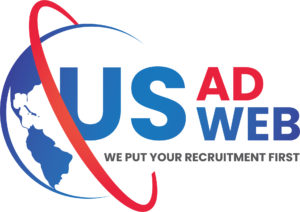DHS Announces 15,000 Additional H-2B Visas for Remainder of FY 2018, Effective May 31, 2018
From USADNEWS Volume XII, Issue 4
The Department of Homeland Security (DHS) announced on May 25, 2018, that it will issue up to an additional 15,000 H-2B visas for FY 2018. On May 31, 2018, DHS and the Department of Labor (DOL) jointly published the temporary final rule in the Federal Register, which is effective from May 31, 2018, through September 30, 2018.
To apply for the additional visas, employers must complete Form ETA-9142-B-CAA-2, attesting that their business will likely suffer “irreparable harm” if they are unable to employ the requested H-2B workers. The temporary final rule defines irreparable harm as “permanent and severe financial loss.” DHS reports that the “determination to increase the numerical limitation is based on the conclusion that some businesses risk closing their doors in the absence of a cap increase.”
The temporary rule permitting the increase in the number of visas is issued under the authority of the FY 2018 omnibus appropriations bill that Congress passed in March earlier this year. Congress granted similar authority to DHS under the FY 2017 omnibus spending bill. The statutory annual H-2B visa cap is set at 66,000 visas, which is split evenly between the first and second halves of the fiscal year. The increase of 15,000 additional visas does not extend to future fiscal years. According to the Washington Post, federal labor officials reported an “unprecedented” demand for H-2B visas in 2018. U.S. Citizenship and Immigration Services (USCIS) received petitions for 81,000 foreign workers for the April-September season, although only 33,000 H-2B visas were available.
Business that depend on seasonal labor lobbied for the increased allocation, particularly the Maryland seafood industry. Eastern Shore seafood processing plants are currently operating without 40 percent of their usual seasonal workforce, many of whom are women who have been migrating from Mexico to Maryland for crab season for the past two decades. The Maryland crab industry complained that President Trump awarded visas this year through a random lottery selection, instead of the usual first-come, first-served basis. Applications for the additional visas will be processed in the order in which they are received.
In order to qualify, employers must meet all existing H-2B eligibility requirements, including having an approved, valid, and unexpired temporary labor certification (TLC). Employers who submit applications with an employment start date before April 15, 2018, must conduct additional recruitment to demonstrate that there are no U.S. workers currently available to fill the shortage. This additional recruitment entails:
- placing a new job order with the local State Workforce Agency (SWA) to remain posted for at least 5 days and beginning not later than the next business day after submitting a petition for H-2B workers to USCIS;
- placing one print or online newspaper advertisement, published any day of the week, while the SWA posting is still active;
- and offering the job to any qualified and available U.S. worker who applies or is referred until two business days after the last date the job order is posted.
Employers must retain proof of all advertising for three years from the date of the ETA 9142B certification.
